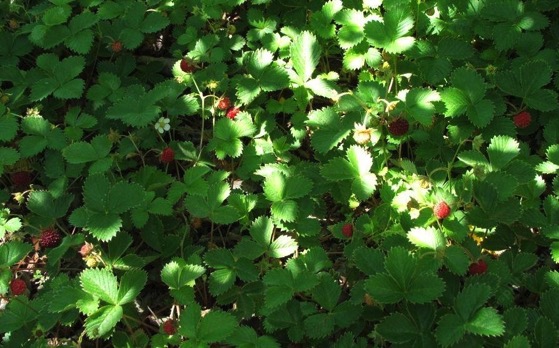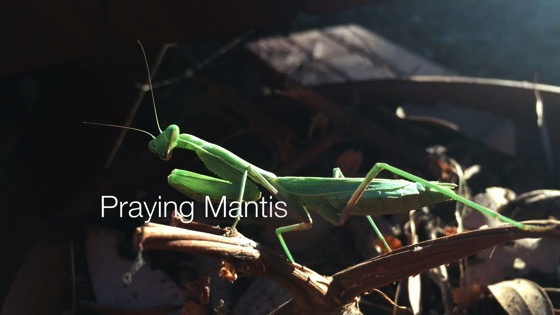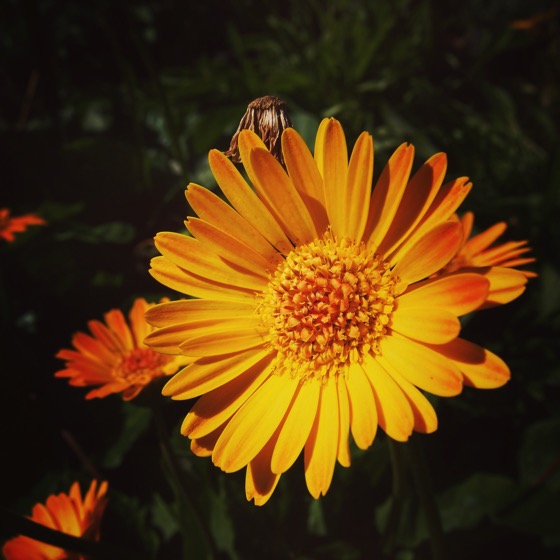Starting a series within a series, I will be highlighting shade plants that grow well underneath trees, especially California Live Oak. I have a deep shade area beneath many trees here in my own garden and i am constantly looking for plants that can help green this area. — Douglas
I have been looking for a good woodland ground cover for our back garden and I have come across the recommendation of California Strawberry many times. That said, I haven’t been able to locate a source for these strawberries close to me. I think this would be an excellent choice for under the heavy trees and would greatly dress up that area. Something that would provide some fruit, too, would be a great extra benefit!
Wood Strawberry/California strawberry (Fragaria californica)
What are your thoughts on this Interesting Plant? Drop a note in the comments!
Fragaria vesca, commonly called wild strawberry, woodland strawberry, Alpine strawberry, European strawberry, or fraise des bois, is a perennial herbaceous plant in the rose family that grows naturally throughout much of the Northern Hemisphere, and that produces edible fruits.[1][2]
Five to eleven soft-hairy white flowers are borne on a green, soft-hairy 3–15 centimetres (1.2–5.9 in) stalk that usually lifts them above the leaves. The light-green leaves are trifoliate (in threes) with toothed margins. The plant spreads by means of runners (stolons).[3][4][5]
Typical habitat is along trails and roadsides, embankments, hillsides, stone- and gravel-laid paths and roads, meadows, young woodlands, sparse forest, woodland edges, and clearings. Often plants can be found where they do not get sufficient light to form fruit. In the southern part of its range, it can only grow in shady areas; further north it tolerates more sun.[6] It is tolerant of a variety of moisture levels (except very wet or dry conditions).[6] It can survive mild fires and/or establish itself after fires.[6]
Although F. vesca primarily propagates via runners, viable seeds are also found in soil seed banks and seem to germinate when the soil is disturbed (away from existing populations of F. vesca).[6]
Its leaves serve as significant food source for a variety of ungulates, such as mule deer and elk, and the fruit are eaten by a variety of mammals and birds that also help to distribute the seeds in their droppings.[6] — Wikipedia
More information on Wood Strawberry/California strawberry (Fragaria californica):
- Wood Strawberry/California strawberry (Fragaria californica) in Wikipedia
- Wood Strawberry/California strawberry (Fragaria californica) at Las Pilitas Nursery
- Wood Strawberry/California strawberry (Fragaria californica) at USDA



- Sticky Monkey Flower (Mimulus aurantiacus/Diplacus aurantiacus)
- Red Stem Dogwood (Cornus stolonifera/Cornus sericea)
- Blackfruit Dogwood (Cornus sessilis)
- California Spikenard and Elk Clover (Aralia californica)
- Bush Anemone (Carpenteria californica)
- California Pipevine/California Dutchman’s Pipe (Aristolochia californica)
- Wild Ginger (Asarum caudatum)
- Begonia Rex (Painted-leaf begonia)
- Leonotis leonurus
- Matilija Poppy (Romneya)
- Melocactus matanzanus (Turk’s Cap Cactus)
- Coleus “Redhead”
- Tiarella ‘Pink Skyrocket’
- Bacopa monnieri (Water hyssop)
- Lycoris squamigera (Naked Lady Lily)
- Kong Coleus (Plectranthus/Solenostemon scutellarioides “Kong Series”)
- Crassula plegmatoides
- Agave victoriae-reginae
- Mountain Cornflower (Centaurea montana)
- Euphorbia ‘Black Bird’
- Firecracker vine (Ipomoea lobata)
- Eryngium yuccifolium
- Dahlia ‘Karma Choc’
- Echeveria Agavoides
- Jerusalem Sage (Phlomis fruticosa)
- Hummingbird Sage (Salvia spathacea)
- Seaside Daisy, Beach Aster (Erigeron glaucus)
- Toyon (Heteromeles arbutifolia)
- California Lilac (Ceanothus)
- Bigberry Manzanita (Arctostaphylos glauca)
- Douglas Iris (Iris douglasiana)
- Malva Rosa (Lavatera assurgentiflora)
- Baby Blue-Eyes (Nemophila)
- Coral Bells or Alum Root (Heuchera)
- Deer Grass (Muhlenbergia rigens)
- Echeveria ‘Lola’
- View all past “Interesting Plant” posts
Interesting Plant is a series from A Gardener’s Notebook blog and podcast that highlights the most interesting plants I find in my Internet and real-world travels — Douglas






